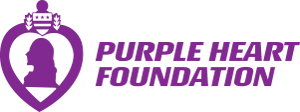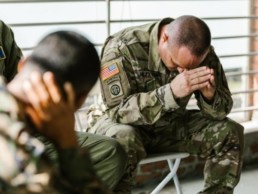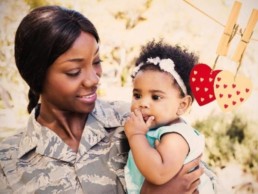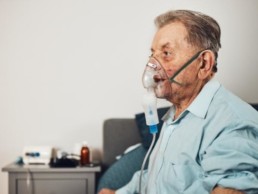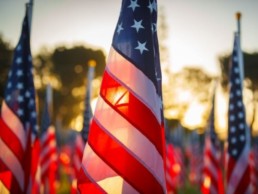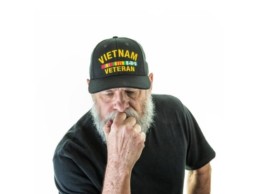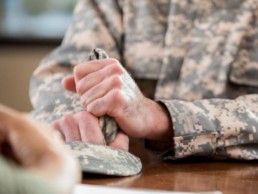Home Buying Advice For Veterans
Our nation’s veterans receive some specific financial benefits upon their discharge from the military. It's crucial they recognize and receive the advice needed to take full advantage of these offers. Veterans can receive benefits ranging from social security to home buying perks. Below are a few important tools and strategies veteran homebuyers can familiarize themselves with to make homeownership easier.
Utilize a VA Loan
When looking to purchase a home as a veteran, accessing Veteran Affairs (VA) loan is a great place to start the process. VA loans are filled with wonderful benefits that you can take advantage of. Purchasing a home with no down payment, lower credit score requirements to be eligible for a loan, and the access to lifetime benefits are just a few of the multiple great benefits you can receive from a VA Loan.
To qualify for a VA loan from a mortgage lender, you must be a veteran, an active duty service member, or a military spouse. But those are not the only eligibility requirements to determine if you will receive a VA loan or not.
If you’re hoping to acquire a loan, some other requirements include serving 90 consecutive days during wartime or 181 days during peacetime as an active duty service member, you have served in the National Guard or Reserves for six years, or you’re the spouse of a service member who suffered a service-related disability or has died in the line of duty.
There is more than one type of VA loan that you can choose from if you meet the eligibility requirements to qualify for one. Each different type of loan depends on certain criteria including credit score, income, and other factors. Bringing in a VA loan savvy real estate agent and completing a Certificate of Eligibility (COE) online are great ways to help you determine what loan type you should go for.
Get the Proper Paperwork in Order
There is plenty of information needed to get your VA loan process underway. The previously mentioned COE, form DD-214, and other general information will be needed during the loan acquisition process.
The COE is a document created by veteran affairs that provides information that proves that you are eligible for a VA loan. It is important to complete this certificate early on in your process as it will help move everything as long as smoothly as possible. A COE can be obtained through eBenefits online.
Form DD-214 is another required document you will need to obtain in the process of acquiring a VA loan if you are currently a military veteran. It shows proof of your discharge from the military. Acquiring your DD-214 form is a straightforward process that you can do yourself or have someone else do for you.
Other common documents needed during the process include a government-issued ID, your W-2 and tax returns from the previous two years, and most recent bank statements and pay stubs. Getting all of these documents together ahead of time will help reduce the stress of the process. To further reduce any financial anxieties and streamline your search, we suggest getting pre-approval on your mortgage. The sooner the paperwork and logistics are taken care of, the sooner you can begin your search for the perfect home.
Searching for Your Home
Once you create your budget, get your loan and mortgage approved, and have all your paperwork in order, you can finally begin the house-hunting process. It’s important to take care of all of the logistical aspects of the process before beginning to look at homes to ensure that you do not fall in love with any homes that you may prove to not be a realistic purchase for you later in the process.
You must consider things such as the school district if you have kids and any taxes that come along with the school district you are located in. Depending on what state you’re looking to live in, there are some different veteran housing benefits in each state. So make sure you familiarize yourself with any potential benefits the state you are looking to live in may offer to you.
Homebuying is a very exciting process, but could also be stressful. It’s important for veterans, active military members, and their families to be informed of the benefits they may be eligible for so they can utilize them to the fullest. Purchasing a home is a huge undertaking and accomplishment, and should be treated as such.
Mesothelioma in Veterans: 4 Things to Know
Veterans today are at risk for developing a multitude of illnesses that can range in impact from mild to extreme. Whether it be a physical injury from one incident, or delayed onset symptoms as a result of prolonged exposure to certain hazards, the life of a veteran can be in danger long after they are no longer actively serving. One serious illness that veterans can be at risk of developing is mesothelioma. Here are some things that all veterans should know about this dangerous cancer:
1. Veterans make up 30% of those diagnosed with mesothelioma in the United States.
Mesothelioma is a rare form of cancer caused by the inhalation or ingestion of asbestos fibers. Asbestos is a mineral that can be found in various construction materials, especially in products used prior to the 1970s. Due to its average 10-50 year latency period, mesothelioma does not usually present itself until much later that the asbestos exposure occurs.
While all veterans and active duty service members are at risk for having been exposed to asbestos, you are more likely to have been exposed and develop mesothelioma if you served between the years 1930 and 1980. This is due to the high volume of asbestos products being used and the low restrictions of their use.
There is an even higher correlation between mesothelioma and navy veterans. Asbestos-containing materials are especially common in shipyards and shipbuilding materials, and being in tight spaces can increase the risk of asbestos fiber inhalation. Veterans who served in this branch should be high-alert for mesothelioma symptoms.
2. Mesothelioma can affect more than the lungs.
Mesothelioma is often thought of as only being a type of lung cancer. However, this disease has various types that can impact different parts of the body. Each type of this cancer also comes with a different set of symptoms. The most common form of mesothelioma is pleural mesothelioma, which affects the lining surrounding the lungs. This type of mesothelioma is responsible for about 80-90% of diagnosed cases. Symptoms of pleural mesothelioma might include chest pain, a persistent cough, coughing up blood, shortness of breath, fever, and night sweats.
The next most common form of this cancer is peritoneal, which affects the lining that surrounds your abdominal organs. Peritoneal mesothelioma can include symptoms like abdominal pain and swelling, weight loss, and even blood clotting.
The two other, more rare, types of mesothelioma are pericardial and testicular. Pericardial mesothelioma affects the lining surrounding the heart, and testicular mesothelioma affects the lining around the testicles. Symptoms of mesothelioma in your heart include chest pain and an irregular heartbeat. And for testicular mesothelioma,you might experience testicular pain, scrotal swelling, and you might even notice a mass.
3. Asbestos exposure is possible even after active duty.
While exposure to asbestos might be more likely to occur during active duty, veterans can also be at risk for exposure depending on their career path after serving. Because of skill sets gained from your time in the military, many veterans may choose to follow careers in engineering, construction, or mechanics. These occupations are all at risk for asbestos exposure due to the products used.
You may also be at risk after your years of active service from secondhand asbestos exposure. Secondhand exposure can occur when there are asbestos fibers left on your uniforms or personal belongings, and you end up inhaling or ingesting them. You could also come into contact with someone who is still serving and in the presence of asbestos-containing materials, which could put you at risk.
4. You have resources to help.
If you have suspected symptoms of mesothelioma, it is crucial to visit a doctor. Early diagnosis can be critical in the setup and success of mesothelioma treatment. However, both the treatment for mesothelioma and the illness itself can greatly impact your financial situation and your ability to provide for yourself and your family. Luckily, organizations have recognized this and have implemented ways to help.
The U.S. Department of Veteran Affairs (VA) recognizes illnesses due to asbestos exposure during service and has made financial benefits available for things like expensive treatments and potentially lost wages. Veterans can file a mesothelioma VA claim, or an asbestos-related lung cancer claim, both of which are given a 100% disability rating. The VA can also assist with finding specialized care through VA accredited hospitals.
Life after active duty can be a difficult period of adjustment and you may still feel the impacts of your time in the service for years to come. You can set yourself up for life-long success by arming yourself with as much information as possible and the knowledge that you have help available to you.
3 Ways to Support a Beloved Veteran with PTSD
Veterans have provided a great service to our country and it often comes with significant personal sacrifice. Whether they have been home for several years or just returned from deployment, conditions such as post-traumatic stress disorder (PTSD) can develop and persist. In fact, between 11 to 12% of veterans who served in the Gulf War, and the Iraqi Freedom and Enduring Freedom operations suffer from PTSD; the figure is even greater at 30% for veterans who served in Vietnam.
Loved ones play a significant role in supporting veterans with PTSD and can make a huge difference with it comes to their quality of life. Here are three ways you can support your loved one if they are suffering from PTSD:
Educate and raise awareness
Educating yourself and raising awareness for others is key to supporting a loved one with PTSD. It is a serious condition that, if left untreated, can lead to depression, drug and alcohol abuse, incarceration, and even suicide. The need for education and awareness is evident by just how common it is, which is often ignored, misinterpreted, and even sensationalized by the media. With the number of diagnosed cases jumping to 50% in the past year alone, people must be made aware of this condition to reduce the stigma attached to it.
There are various misconceptions that people have about PTSD. For one, it is often thought that the condition develops immediately after a traumatic experience when PTSD can actually surface years after the event has passed. However, it is possible to recover from PTSD, contrary to popular belief, and maintaining the right treatment program on a consistent basis is the key to achieving rehabilitation.
Ensure veterans are cared for
Reintegrating back into normal life can be difficult for veterans, even years after they have served. It is especially challenging for veterans under unique circumstances, such as those with physical and psychosocial medical conditions like permanent injuries or PTSD. According to the US Department of Veteran Affairs, about 1.7 million veterans received mental health services last year.
Navigating these conditions to live life to the full can be challenging without support, which is why veterans need special care. In these cases, it is helpful to enlist the help of healthcare professionals, like nurses. Nurses with MSN qualifications are great because they are experienced in dealing with holistic health, which is especially valuable when reintegrating veterans back into civilian life. They’re adept at administering preventive and psychosocial care and making evidence-based decisions while being compassionate to their patient’s needs. These professionals understand the nuances that come with veterans’ sometimes complex needs and implement programs that are crucial to their recovery. By doing so, you can help support your loved one with the proper interventions during such a critical time.
Help veterans adjust at home
Creating a healthy home life is of the utmost importance for veterans with PTSD. One of the most difficult parts of transitioning from military to civilian life once again is adjusting to life at home. Veterans may find switching from strict rules in military life to a more relaxing environment a bit disorienting. Helping them maintain a comfortable home environment can help them tremendously, while also being extremely patient with them during this time.
Friends and family can help veterans find a home, whether that’s a new apartment or house. For veterans that live with their loved ones, the arrangements must be well suited for the person returning home. This should include considerations for the survival skills they have learned, how they manifest at home, and how the family can adjust to assist them. Understanding how the need for safety, anger, and even mission orientation affects the dynamics at home can allow you to find a compromise to help veterans grow accustomed to civilian life once again. If needed, it will also allow you to seek help, whether from a nurse or another qualified professional.
Ultimately, supporting a beloved veteran should be aligned with their goals for recovery and reintegration. Asking for help from professionals, family members, and friends can make the experience much easier, and it can aid in your loved one’s recovery from PTSD.
The article was written by Reggie Ann James
Exclusively for PURPLE HEART FOUNDATION
4 Ways Veterans Can Take Control Of Their Finances
Taking control of your finances can be trying for anyone, but for struggling veterans, this issue may feel impossible to tackle. Luckily, there are lots of resources available, and the Purple Heart Foundation prides itself on helping military veterans and recognizing the sacrifices they’ve made. We would like to extend some information on how veterans can take control of their own finances on an individual basis.
1. Check Your Credit Score
Credit scores may not be the first thing on your mind when checking your bank accounts, but they are an extremely important tool that is needed when making big-ticket purchases. For example, buying a home will require a credit score check before you are able to take out a loan. Although VA loans offer flexibility to veterans, it’s still a great idea to first understand what credit score is needed to buy a home. Checking your credit score is free and won’t impact your credit. Plus, just this small step will allow you to gain a clearer picture of your financial situation.
2. Have a Plan to Pay Off Your Debts
Anyone struggling with debt understands the burden it can have. However, it’s crucial that big and small debts alike come with a plan for paying them off. Some of the more important factors to consider when creating a debt payoff plan that financial experts recommend is to include what your baseline budget will be and how much you’re going to allocate each month toward your debt payoff. Having an idea of how you’re going to pay your debts on time and eventually living debt free will be a huge weight off your shoulders and allow you more flexibility in your finances.
3. Cancel Unnecessary Subscriptions and Limit Overspending
Overspending is a common problem for many. There’s a reason such a thing as “retail therapy” exists! But that joy from buying a fancy back scratcher will quickly fade once you do the math on how much these unnecessary wants are costing you. Ways to combat emotional spending may include window shopping instead of buying so you can learn to understand what triggers your desire to overspend. Even taking a look at your monthly subscriptions, such as streaming services, and cutting back on those can help you increase your budget and improve your ability to meet long-term financial goals.
4. Save Up Toward Retirement
Lastly, retirement should be a huge consideration and part of your overall financial plan. Whether it’s through a 401(k) plan or savings account, having money set aside specifically for your retirement is a great way to start. Consider also speaking with a financial advisor to see exactly how much you and your family should save up to retire, and what your individual options are.
Taking control of your finances is no small task, and with the COVID-19 pandemic, this task may become that much more difficult. The Purple Heart Foundation is committed to helping veterans in whatever way possible, so we hope these steps will help you take control of your finances. If you would like to help veterans who are struggling financially, please be sure to check out our Veterans Critical Assistance Grant and make a donation today. Together, we can make a difference in the lives of our nation’s veterans.
Guardians of Democracy
The Purple Heart Foundation prides itself in recognizing military service members throughout the years. The United States military, law enforcement and first responders are an essential part of this country as they give their lives for our freedom and our safety. This past year has been very tough for everyone due to COVID-19, but it has been especially hard on our essential workers. The Purple Heart Foundation would like to extend a heart-warming thank you to these guardians for protecting our freedom and ensuring our safety. During this Black History Month, we recognize Eugene Goodman for his heroic efforts on Jan 6, 2020 during the attack on the capital building.
Eugene Goodman was born and raised in the Southside of Washington D.C. in the 1980’s. Goodman had humble upbringings and graduated from Central High School in Capitol Heights in 1999. Many of his teachers have come out expressing how truly proud they are of him. They described him as a quiet, helpful, and well-mannered student. It is said that, without even knowing it, he took on the role of peacekeeper at a young age by breaking up fights in the lunchroom on occasion. “To save this country, I mean for this person to save this country, I just feel so connected,” one of his teachers, Mr. Banks, expressed through tears.
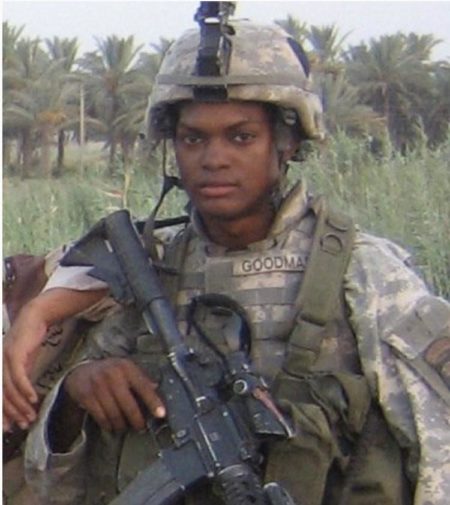
Not long after, Goodman joined the United States Army, serving from 2002 to 2006. During his time in service, he was part of the 101 st Airborne Division, serving in the Iraq War. He left the military as a Sergeant to later join US Capitol Police in 2008. His former unit XVII Airborne Corps said he was a hero long before the incident on Jan 6. He is truly a guardian of his city, from a very young age.
On Jan 6 th , 2021, our Democracy was attacked by rioters. Shock and disbelief are among some of the reactions that most people had, as everyone watched live on national television as the United States Capitol building was being breached. At the time, both the House and Senate Chambers we’re in the middle of certifying the official win of President elect Joe Biden and Vice President elect Kamala Harris.
The world watched in shock and prayed for the safety of everyone inside as the unimaginable happened at the Capitol that day. It seemed like a movie that went on for hours. All those defending our democracy that day are heroes, but after getting a closer look at personal videos, security footage and more, one hero stood out, and his name was Eugene Goodman.
As Goodman saw the rioter’s approach his location, without a doubt, he took matters into his own hands and tried to diverge the crowd in front of him away from the Senate Chamber while calling for back up in another part of the Capitol. Eugene used himself as bate, knowing that they were only feet away from the Senate Chambers where Vice President Mike Pence and over 100 other officials prepared for the worst. Eugene Goodman’s actions that day may have save their lives, and for that he was recognized worldwide, and awarded the Army’s Distinguished Public Service Award. Both Republican and Democratic politicians, have commended Goodman for single-handedly taking action and preventing a bigger tragedy than what they had already been living.
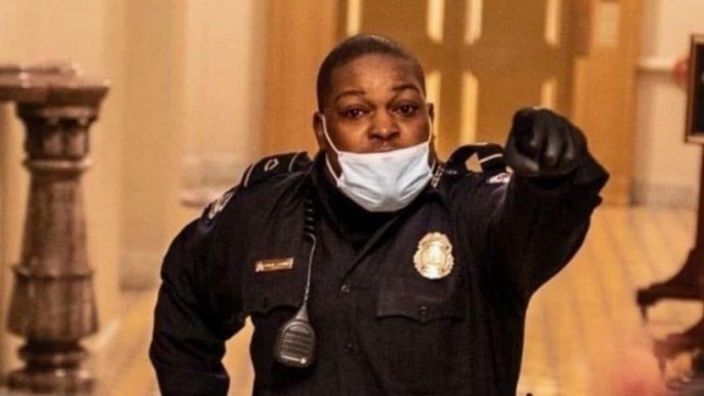
Following the incident on Jan 6 th , 2021, Eugene Goodman’s actions that day have been highly recognized worldwide, and for those actions was awarded the Army’s Distinguished Public Service Award. Lawmakers have also proposed a bill to award Capital Police Officer Eugene Goodman with the Congressional Gold Medal; one of the highest awards a civilian can receive. As grateful as he is, it is reported that he is also afraid he might be targeted by extremists and said he would do the exact same thing again. During the Presidential Inauguration, Goodman got to escort Vice President-elect Kamala Harris to the stage. He was promoted to Sergeant at Arms of the United States Senate and was announced as such during the Inauguration where he received a standing ovation.
Eugene Goodman has become a household name since that very day. His courageous actions protected not only the people inside the U.S. Capital building, but also everything it stands for, as a symbol of democracy which is the very base of our country. Eugene Goodman goes down in history not only as a great human being but as a guardian of the city of Washington D.C. The Purple Heart Foundation is proud to recognize him as an outstanding member of society for his selfless acts, not only on Jan 6th but throughout his career. Men and women like Eugene, are the ones that keep our country safe and give us the freedom we take for granted every day. So, we thank you, Eugene Goodman, for your bravery, valor, and lifetime of service to this great nation.

SOURCES:
https://en.wikipedia.org/wiki/Eugene_Goodman_(police_officer)
Doing right by Ms. Wright
In March 2020, as the deadly coronavirus quickly spread all over the world, the Purple Heart Foundation started to pivot it’s focus on programming to better help the veterans being affected by the pandemic. 43 of the 50 states, that make up these United States of America, shut down and/or issued a stay-at-home order to prevent the virus from spreading to more people quicker. However, these necessary health precautions made it difficult for businesses to keep paying their employees, or even to stay open much longer. Many businesses closed or downsized, causing the unemployment rate to reach unprecedented levels for most tradesman and service-related jobs…ideal jobs veterans sought out in order to utilize their skills, work with their hands, and start new careers after their service. Once these statistics became clear, the Veteran Assistance Grant program was born.
The Purple Heart Foundation’s Veteran Assistance Grant program was created to cover emergency debts a veteran might be facing due to the extreme circumstances created by the coronavirus pandemic. The program was designed to bridge the gap for veterans in-need.
For example, U.S. Air Force disabled veteran, Ms. Wright, became unemployed in April 2020 due to the coronavirus pandemic. Her car was inoperable, and she couldn’t afford to fix it and continue to pay for Uber rides to and from interviews and the grocery store while she looked for work. The Purple Heart Foundation was able to collect all Ms. Wright’s information regarding her situation and approve her for a Veteran Assistance Grant to help pay for her car repairs. Ms. Wright can now search for employment and still meet her other monetary responsibilities without spreading herself too thin, financially or otherwise.
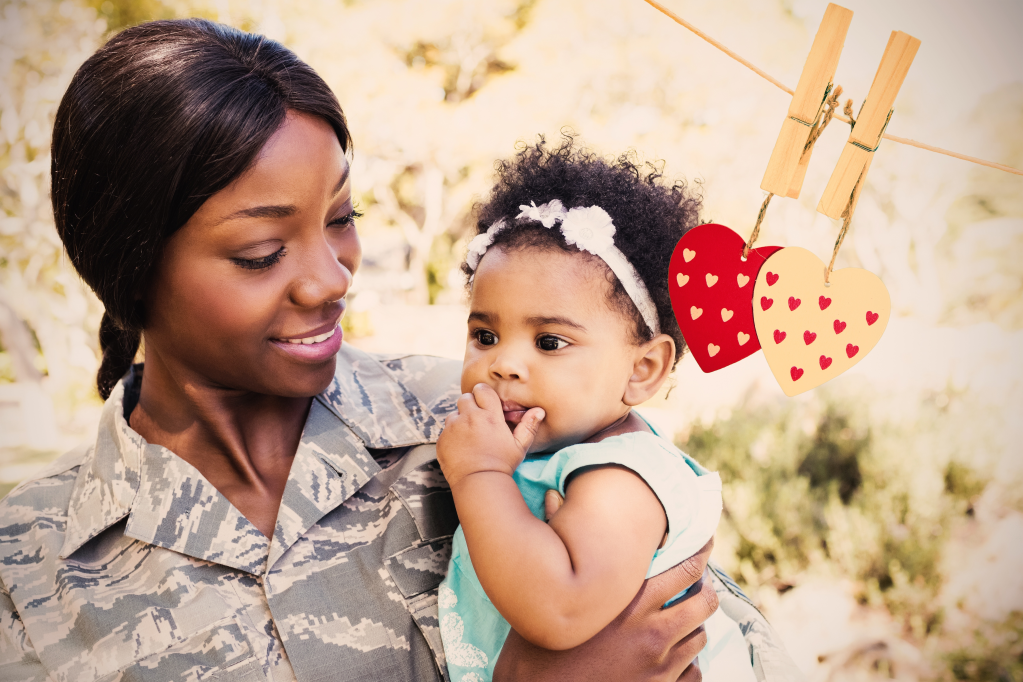
After receiving her grant, we caught up with Ms. Wright and this is what she had to say:
“Thank you for not only awarding this amount, but thank you for being there for veterans in their times of need. Feeling unsure about what’s going to happen with my car, this amount awarded allowed me the security of being able to maintain having a car, which is a critical part of accomplishing daily needs. Even though these circumstances affect everyone in our country, it’s an honor to know we can be there for each other even during a pandemic.”Ms. C. Wright (Las Angeles, CA)
The Purple Heart Foundation does not receive government funds and relies 100% on donations from supporters like you. This holiday season, with coronavirus numbers peaking again, we expect even more veterans in situations like Ms. Wright’s will need your help. The Veteran Assistance Grant could prevent veterans from becoming homeless in these cold winter months or prevent a veteran from having to choose between keeping the lights on or putting food on the table.
With your gift of $25, $50, $100, $250 or more, you could help more veterans like Ms. Wright feel the security of having a support system to tackle the struggles they are facing during these difficult times.
Help make this holiday season a little easier for a veteran facing hardships. Or, if you (or someone you know) are a veteran facing a similar situation, please apply for assistance with the Purple Heart Foundation today.
Recognizing Our Veterans This Mesothelioma Awareness Day
This September 26th marked the 17-year anniversary of Mesothelioma Awareness Day. This is a day devoted to spreading awareness about this rare and extremely aggressive form of cancer. What many do not know is that mesothelioma is one of the few non-genetic forms of cancer and is usually spoken in tandem with asbestos. Asbestos is the only known culprit of mesothelioma and was heavily used throughout the military from the early 1900s up until the 1980s. Unfortunately, its past use in the military has led to emerging mesothelioma cases today, with roughly 900 new mesothelioma diagnoses annually among our veteran population.
Exposure In The Air Force
For veterans of the Air Force, exposure to asbestos most likely happened on actual Air Force bases. Insulation, wall board, piping, plumbing, sealers, and adhesives were known to contain this carcinogen. Servicemen and women most at risk of exposure were the ones who lived on these bases with their families.
Planes used by the Air Force also contained asbestos in some parts, such as the heat shield, engine, and brake pads. Aircraft mechanics were put at risk as these parts began to wear down and fibers were released into the air. Secondhand exposure was also a risk, as asbestos fibers cling to the clothes. This means that mechanics could have been carrying asbestos off the job site, unknowingly exposing their families when they came home from work for the day.
Exposure In The Coast Guard
Those who served in the Coast Guard were mostly likely to come into contact with asbestos while on shipyards and on ships. Coast Guard Cutters were likely to be harboring asbestos in many different areas of the ship. Pump rooms, boiler rooms, sleeping quarters, and mess halls all could have had asbestos-containing materials (ACMs) present. The close quarters type of living on these vessels allowed for asbestos fibers to travel easily to other areas of the ship, potentially exposing everyone on board. The height of exposure for Coast Guard personnel was during World War II, where usage and production of asbestos was at its peak.
Exposure In The Army
Similar to the Air Force, Army personnel had a high risk of exposure when on Army bases. Insulation, floor tiles, roofing, and cement incorporated this carcinogenic mineral not only because of its fire-resistant qualities, but because it was so cheap. Off-site locations known as Army reserves were also prone to the usage of asbestos. In 2005, the Environmental Protection Agency (EPA) reported that there were still ACMs that needed to be abated from these locations.
Army vehicles also utilized asbestos in some parts that would experience high temperatures and friction. This posed a risk to Army mechanics whose job required them to repair brake pads, gaskets, and clutch plates on vehicles used in combat and transport.
Exposure In The Navy
Navy veterans are the most likely of all military personnel to develop an asbestos-related disease. This is due to the fact that asbestos was most heavily used among this branch of the military. Cruisers, destroyers, aircraft carriers, submarines, and more were often built with ACMs. Asbestos was primarily used in the insulation of these vessels and was also favored because it does not deteriorate easily when in contact with water. The servicemen and women involved in the building, repairing, and retiring of these ships were the ones who most likely were exposed, as the ACMs would degrade overtime.
Exposure In The Marines
Much like the Navy and Coast Guard, veterans of the Marines were also put at risk by being on and working with ships. Marines are often aboard Navy ships being transported to and from conflict areas. While being transported, they carry out maintenance tasks the same as any Navy member would. These duties may involve repairing gaskets or removing insulation, which can disturb and release asbestos. Unfortunately, many of the high-risk ships used throughout World War II and the Vietnam War are still a part of the Navy’s fleet today.
Spreading Awareness
With mesothelioma continuing to affect so many veterans every year, the Purple Heart Foundation believes it is imperative to increase awareness of this disease. This cancer could be diagnosed less, or even disappear, if we are vigilant in protecting ourselves and our military population from asbestos exposure.
4 Ways to Give Back
There are a few days throughout the year when we think about or officially recognize veterans and service men and women. But there are ways to give back to current and former members of our military every day of the year.
Say thank you.
When you see a service man or woman in uniform, or a person wearing something that identifies them as a veteran, take a minute to say hello and thank you. You don’t need to make a big, dramatic gesture; just let them know you appreciate their service. If they feel like talking, take the time to listen to their stories.
Hire a vet.
Do you own a business? Consider hiring a veteran. You can work with the United States Department of Labor’s VETS Program, or similar nonprofit organization that helps vouch for and place qualified veterans in businesses.
Stay informed.
Only a fraction of U.S. citizens currently serve, and few Americans have personal contact with members of our military, causing a disconnect between the military and the civilian worlds. Take some time to get informed about the issues facing our troops and veterans. Follow veteran organizations on social media, and learn about how you can help.
Make a donation.
When you donate to the Purple Heart Foundation, your generous gift helps us to support veterans and their families during their transition from the battlefield to the home front.
Our programs and those to which we award grants support hundreds of thousands of our nation’s heroes. There are many ways you can make a tax-deductible donation.
- Visit our website and make a credit card donation.
- Call us at 888-414-4483 or complete the form to donate your vehicle.
- Schedule a pick-up to donate clothing or household goods.
- Simply text PURPLE to 20222 to make a $10.00 donation right now.
- Consider becoming a Purple Heart Legacy member, and leave a gift from your estate. Call us at 703-256-6139 to discuss your options.
We often get asked how we use your donations. Here is a snapshot. If you want more information, give us a call; we would be happy to share it with you.
We use your generous donations
- To help fund research and assistance that tackle the unseen wounds impacting veterans, things like Post Traumatic Stress (PTS), Traumatic Brain Injury (TBI); suicide, and sexual abuse
- To fund Purple Heart’s Service Officers, who are stationed throughout the country to work with veterans informing them about education opportunities, scholarships, disability compensation, employment training, hospitalization and rehabilitation benefits, pensions, and more
- To employ a full-time attorney dedicated to protecting the interests of wounded servicemen and women and presenting veterans’ claims before a court
Vietnam Veteran to High School History
We all wonder where life will take us, he never wondered, he knew. John Harrison, a sophomore student at North Carolina University, wanted to fly helicopters but the only way he was able to, was by joining the Army. Not many would jump at the idea of joining the military, but he did… just to fly helicopters. Growing up he had a great childhood, a loving family and no regrets. With a clear vision in mind and the love for helicopters in heart, he pressed on with the hopes of making a difference.
It didn’t take long for John to get through Basic Combat Training, pass all qualifications and tests at Ft. Polk, L.A. and confidently begin his service in the United States Army, something he had aspired to do for so long. The transition from civilian to soldier was not an easy one though; it was divided into three parts…
- “The RED phase” is the beginning of your training, to prepare you for what’s to come.
- “The WHITE phase” is where he got most of the physical and psychological strength.
- “The BLUE phase” taught him how to handle weapons.
During the first several months in the military, John really enjoyed his time with fellow soldiers and instructors who only had “Tough love” for him. Since he had prepared well for the Army he was in great shape to withstand just about anything, even though he recalls the weather being too hot. It was so unbearably hot in Vietnam that they would drink 4 to 5 gallons of water, every day.
Many would be surprised how John expresses his take on joining the army, but this experience changed his life, his points of view, and his whole being. In the military you can train and prepare as much as possible, but nothing is like experiencing the challenges and traumas of combat than real life. John went to Officer Candidate School later, where he became Airborne Rifle Platoon Leader and Company Executive Officer.
Not long after, his unit was deployed to Vietnam on a USNS (United States Naval Ship). John joked, that although his accommodations on that ship weren’t great, the food was the best part. Since the ship was old, they had to stop at an island in the Philippines for repairs. While on the island, many of them stayed late in a club and almost ended up getting killed! Then after leaving the island, they came across the end tag of a typhoon and many were having trouble keeping their food down.
Finally, they reached Vietnam. They were told they would be safe because they were being protected by South Korea. One of the scariest and most unexpected moments in Vietnam was the first time he got shot at while walking in the mountains with his platoon. John thought to himself that he had been around shooting ranges so it wouldn’t be such a big deal…but as they kept taking on fire, he felt dumbfounded, he didn’t react, he didn’t really know what to do in that moment. The firefights in Vietnam were nothing like they had trained for.
John lasted 4 years in the Army, and said that it was nothing like he had expected. The military can train you so much, but you will never be completely ready to fight when it comes down to it. He was awarded the Purple Heart medal, because he was wounded during his service in Vietnam. He is thankful every day for not ever being captured as a prisoner of war (POW) and for being able to come home to his family. John retired from the military and went back to school to study Law. He became a well-known attorney and realtor in the Washington-Metropolitan Area. Later he went on to teach law at Bishop Denis J. O’Connell High School where he said he truly enjoyed his time with his students and learned a lot from their different opinions.
Now John enjoys his time traveling, being at home and just enjoying life. He has published two (2) books, in which he narrates his life experiences in Vietnam. From one’s first impression of John though, you wouldn’t think he was a veteran or picture him in the dangerous settings he described to me today. One thing is for sure though, John Harrison is and always will be, “Army Strong”.
Raising Awareness About Post Traumatic Stress
In WWI it was called Shell Shock; in WWII, Battle Fatigue. Korean War veterans were diagnosed with War Neurosis, and Vietnam vets with Post-Vietnam Syndrome. Whatever you call it, Post Traumatic Stress (PTS), as it’s now known, continues to affect hundreds of thousands of veterans.
Today is PTSD Awareness Day, a day to speak up about post-traumatic stress, a condition that’s underreported, misdiagnosed, and, so often, misunderstood.
PTS BY THE NUMBERS:
- 10-13% of combat veterans experience post-traumatic stress in their lifetimes.
- Studies estimate that 1 in 5 military personnel returning from Iraq and Afghanistan has PTS.
- PTS affects to 20% of Operation Enduring Freedom and Operation Iraqi Freedom veterans; 10% of Gulf War veterans, and 30% of Vietnam War veterans.
- 17% of combat troops are women; 71% of female military personnel develop PTS due to sexual assault within the ranks.
- The number of diagnosed cases of PTS in the military jumped 50% in the past year.
SEPARATING MYTH FROM FACT
The psychological scars of post-traumatic stress may be invisible, but its manifestations are not. Left untreated, it can lead to depression, drug and alcohol abuse, or suicide. Despite its prevalence, post-traumatic stress is often ignored, misinterpreted, and sensationalized by the media.
Listening to the stories of veteran experiencing post-traumatic stress can help us separate myth from fact.
MYTH: People begin experiencing PTS immediately after a traumatic event.
FACT: Sometimes symptoms surface months or years after a traumatic event or returning from deployment.
“ I was sober and clean almost 11 years, and I just couldn’t handle it no more, you know, my life. I couldn’t hold a job. I always had problems sleeping…very irritable, the whole bit. Plus, my family was always telling me I should go get some help.”
US Navy ((1971 – 1972))
SN, Ammunition Transporter
Vietnam
MYTH: Service members can never fully recover from PTS.
FACT: When people seek help and maintain a treatment program, post-traumatic stress symptoms can be managed or overcome entirely.
“My ability to overcome the situations that cause me to act negatively and not beneficial to me, are up to me, and I continue to seek treatment. I want to make a choice, not have my depression make the choice.”
